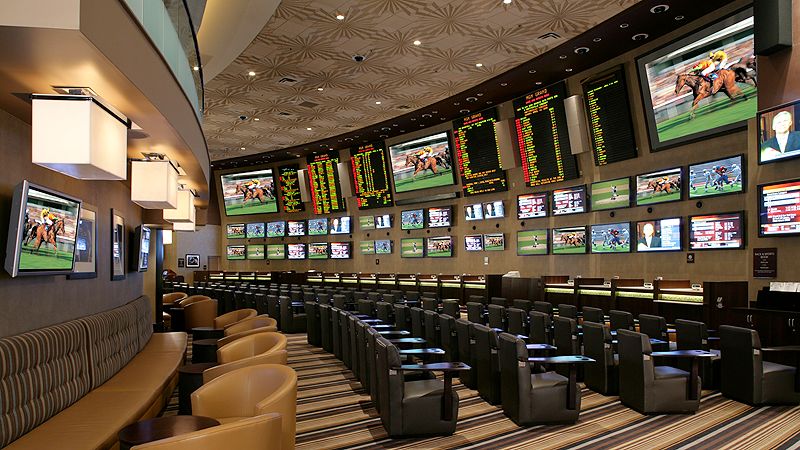 In the handicapping world, most bettors are segregated into two groups – squares and sharps. The distinction between a square and sharp has become cloudier in recent years, because the advance of the internet has allowed the public to enjoy some of the advantages that professionals used to have. Twitter has been a major help to bettors, who are now more aware than ever of injuries, suspensions, and various other distractions that can plague a team. In the old days, professionals were privy to inside information like that. They still, sometimes, get it quicker than the betting public, but everyone eventually gets the same news.
In the handicapping world, most bettors are segregated into two groups – squares and sharps. The distinction between a square and sharp has become cloudier in recent years, because the advance of the internet has allowed the public to enjoy some of the advantages that professionals used to have. Twitter has been a major help to bettors, who are now more aware than ever of injuries, suspensions, and various other distractions that can plague a team. In the old days, professionals were privy to inside information like that. They still, sometimes, get it quicker than the betting public, but everyone eventually gets the same news.
Depending on who you talk to, the notion of square or sharp can be defined in several different ways. Some people subscribe to the idea that every professional is a sharp and every amateur is a square. Others will define sharps as bettors who always get the best of the number. Others will defend sharps as guys who are able to see every angle and make a bet on an undesirable team in a good spot while squares will back their favorites week after week. Many people associate underdogs and unders with sharps and favorites and overs with squares.
Overall, if you’re looking for a true definition in 2012, there isn’t one. Every public bettor has some elements of sharp ideology to their bets. They aren’t as sharp as the professionals who make a living betting on the outcomes of sporting events, but they aren’t as ill-informed as they used to be. The public side can still be the winning side from time to time, as evidenced by last season. Over the first six or seven weeks of the college football season, the AP Top Ten teams were covering at an unbelievable rate. Sharps were fading (betting against) those teams because of inflated numbers, yet the favorites still kept covering. It evened out last year and the AP Top Ten has not fared nearly as well this season.
Anymore, the discussion has been whittled down to one major distinction. Sharps get the best numbers. It makes perfect sense. Somebody who is very serious about betting will have his or her own set of power ratings or some variation of that which will give them a projected spread. If the spread released by the Wynn in
People who follow betting very closely will be able to see patterns and expect what numbers will come out. They understand the concept of “perception” – how a team is viewed by the sportsbooks and by the public. They will have certain spots circled, like letdown spots or sandwich spots, two topics I have discussed in the past.
Think about it this way. A large antelope hobbles, wounded in the woods. The biggest predators in the forest can sense it from miles away and head straight for an easy meal. It’s a perfect spot for a predator – a nearly effortless meal where it can save its energy for chasing something another day or protecting itself. The predators chow down, getting the prime cuts of meat and satisfying their hunger. They leave. The weaker animals, starving from constantly having to fight off bigger, meaner foes get what’s left. Carrion birds circle, flying down to peck away at the remnants. The sportsbook, responsible for hanging a bad number, is the antelope. The sharps are the predators. The public, well, we get what’s left.
Bad numbers are pointed out immediately. It can be a bad number for a lot of reasons. It could be an overreaction to last week’s result. It could be an underestimating of a revenge angle or a sandwich spot. It could be a spot of a team coming off bad travel. Whatever the reason is, the sharps will find it and attack it.
Sharp line moves usually come in three phases. The first phase is to attack the opening line. The second phase is to attack the line before the public moves it. The third phase is when betting syndicates release their plays to their clients.
In Phase One, the goal is to prey on a number that looks wrong. Power ratings play a big role in that. If a bettor, or collection of bettors, have a game lined as -3.5 and it comes out at -8, you’re going to know it immediately. The following is an example from this week:
The Stanford at Notre Dame line opened Stanford +10. By Tuesday, it was down to +8 and by Thursday afternoon, it was down to +7. This is a sharp line move. For one thing, Notre Dame’s defense has allowed three touchdowns all season long. For another thing, Stanford is flying about two-thirds of the way across the country. For another thing, Stanford just gave up 48 points to
The sharps, however, see a lot of reason to back Stanford. They came from behind last week against
In Phase Two, the goal is to get the best of the number before the public moves it. If a trendy underdog pops up on the board and is getting a couple too many points, the sharps want the +15 instead of the +13. Also, for sharps, this could open up middle opportunities if the game crosses key numbers. Furthermore, if new information comes out about a game or a mid-week injury, somebody holding +15 could always buy back -13 or -13.5 and hope it somehow lands on a 14-point spread or just drink the juice and lose the vig instead of the entire bet.
In Phase Three, syndicates take over the market. Syndicates are groups of bettors who, with the help of computers, are able to project the way that games will go. Some of them, like Right Angle Sports, are wildly successful. When they release a play to their paying clients, who pay upwards of $5,000 for half of the season, the line will move because of an avalanche of money coming down on one side. That generally happens sometime between Tuesday and Thursday. It’s pretty obvious to tell when it does happen.
So, how do you know which side is the right side? Most line screens, like the ones I discussed last week including pay options like Don Best Sports or Sports Options, or free ones like SBROdds, will show percentages of what side the action is on. Some games, 85% of the action will be on one side, but the line will have moved a point or two the other way. That’s the simplest way to tell where the big, respected money is.
Sometimes, it’s as simple as common sense. Take the West Virginia-Texas Tech game this week. Everybody has been impressed with
Why
Finding out where the money is can be really helpful. The last thing you want to do is find out that you’re up against some very smart money. A few of weeks ago, I played the Texas-Mississippi under. The total of 51 seemed too high for me in a game where I expected
The more bets you make and the more market watching you do, you will be better equipped to catch these situations before they trip you up or wait out a couple extra points, simply by knowing where the money is and where it’s going to come in.
Good luck and pick winners.




 You read the title and think to yourself “okay, so how is this different than any other week?” And the answer, of course, is screw you, it IS different. This week I’m breaking the opening rant into a series of USA-today short-attention-span ADHD-friendly bullet points. I’m doing this because I feel like doing this.
You read the title and think to yourself “okay, so how is this different than any other week?” And the answer, of course, is screw you, it IS different. This week I’m breaking the opening rant into a series of USA-today short-attention-span ADHD-friendly bullet points. I’m doing this because I feel like doing this. Compared to the bloodthirsty throngs in Philly or Boston, the sports fans of Cleveland are a relatively forgiving lot. Failure alone will rarely turn us against one of our own. Combine that failure with a perceived attitude of arrogance, ignorance, or simple indifference, however, and a local ballplayer can quickly find himself the target of 50 years worth of bottled-up rage.
Compared to the bloodthirsty throngs in Philly or Boston, the sports fans of Cleveland are a relatively forgiving lot. Failure alone will rarely turn us against one of our own. Combine that failure with a perceived attitude of arrogance, ignorance, or simple indifference, however, and a local ballplayer can quickly find himself the target of 50 years worth of bottled-up rage.
